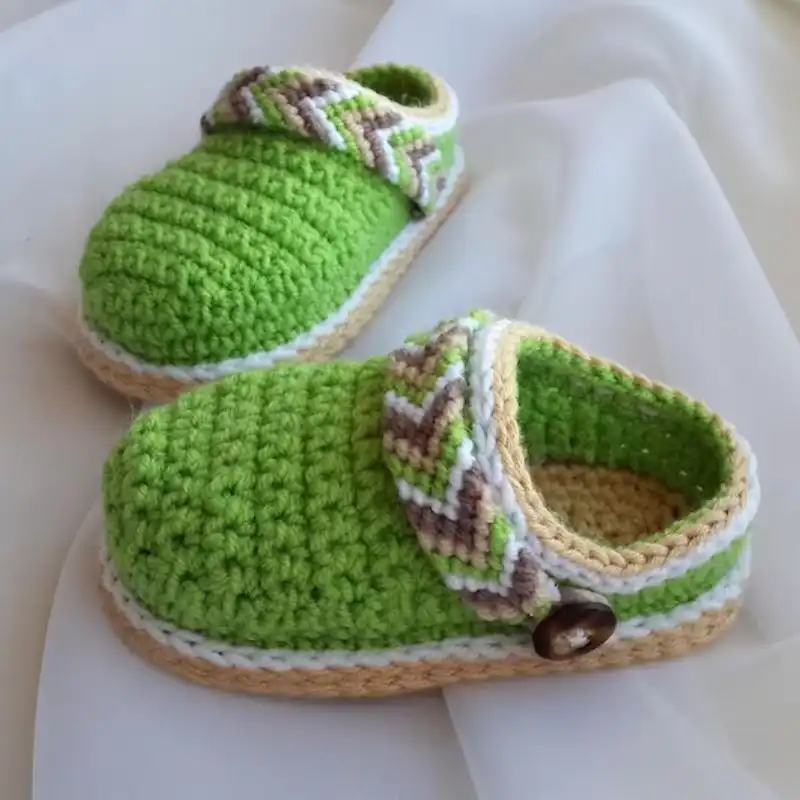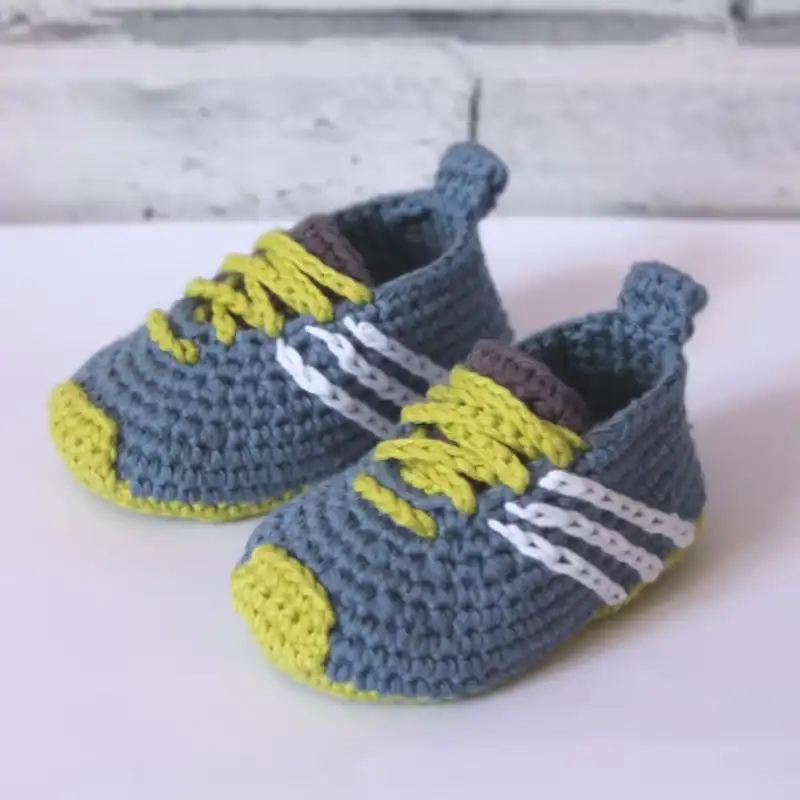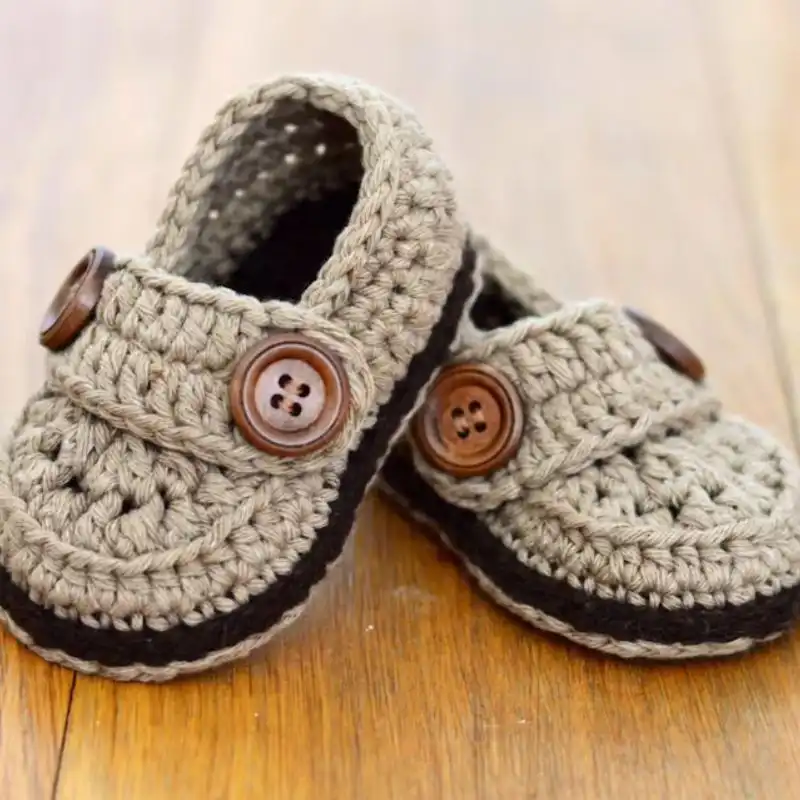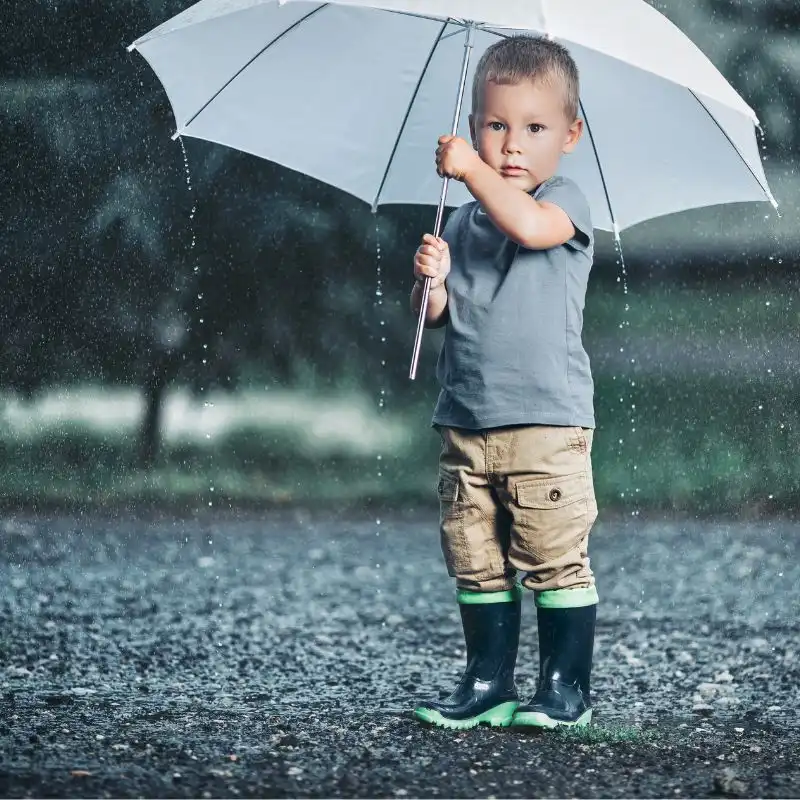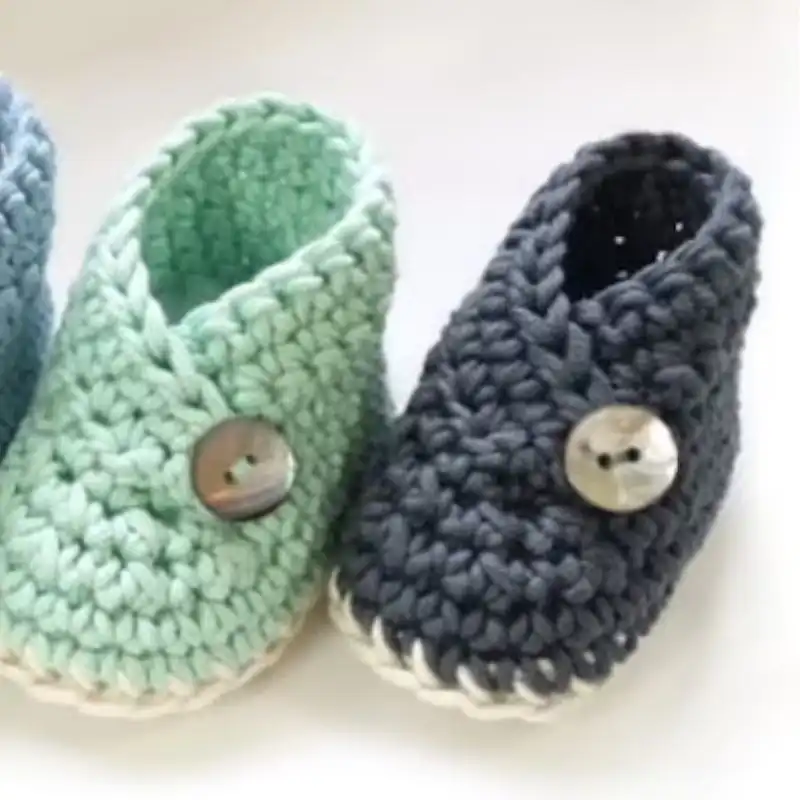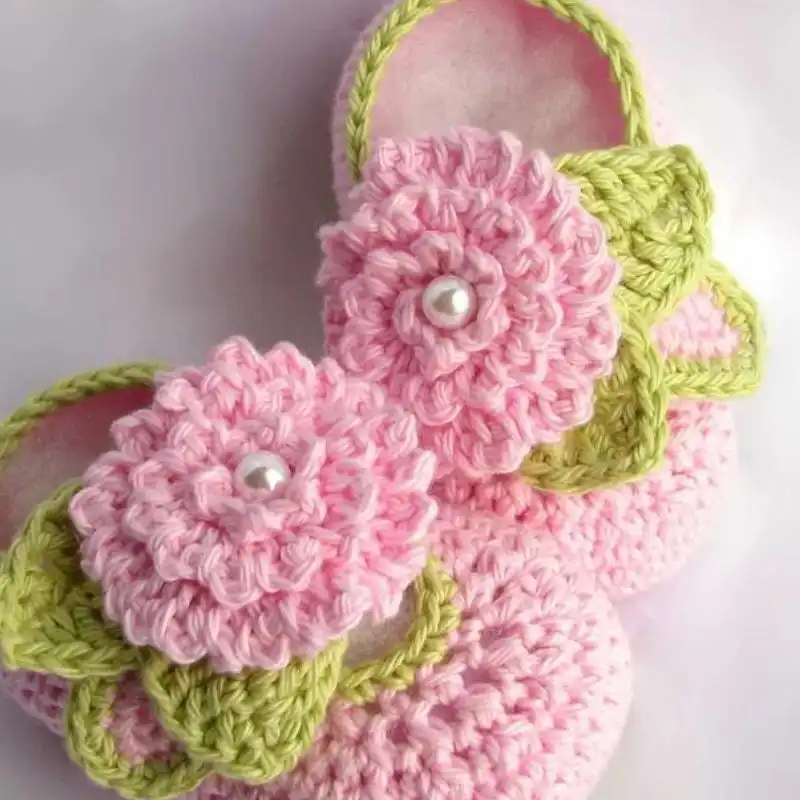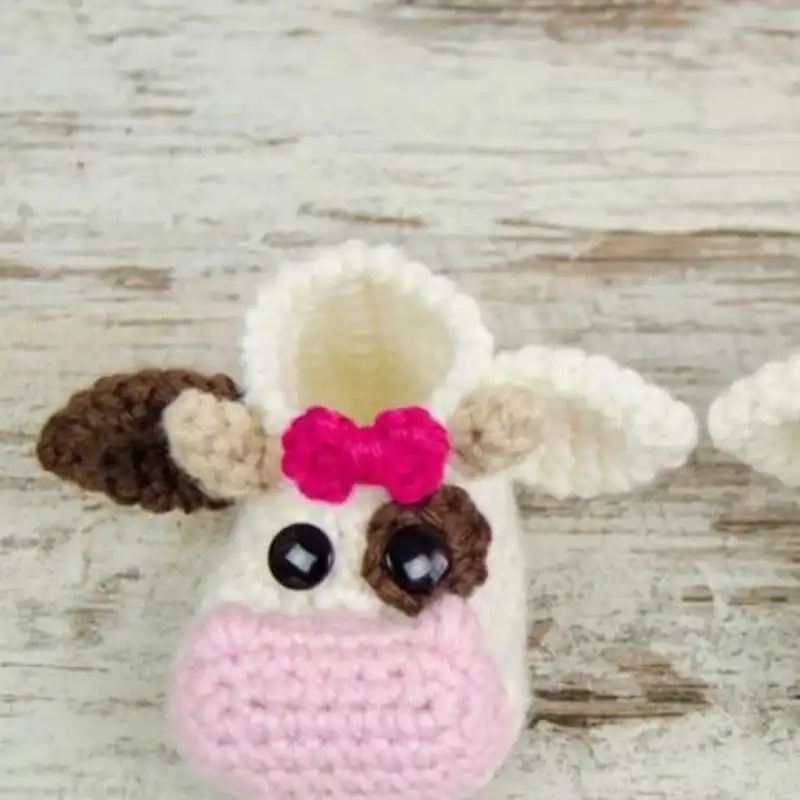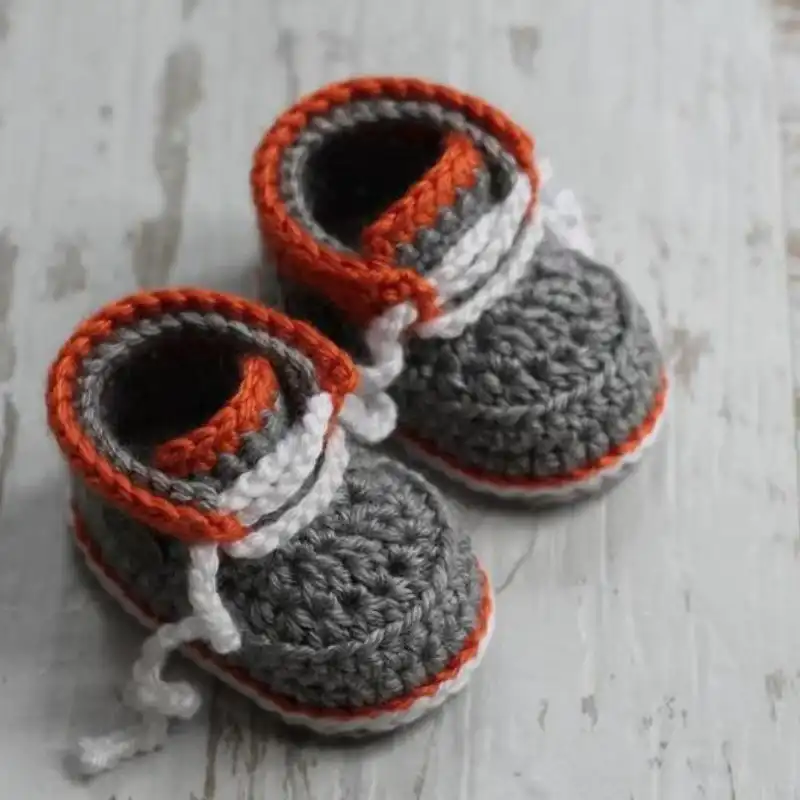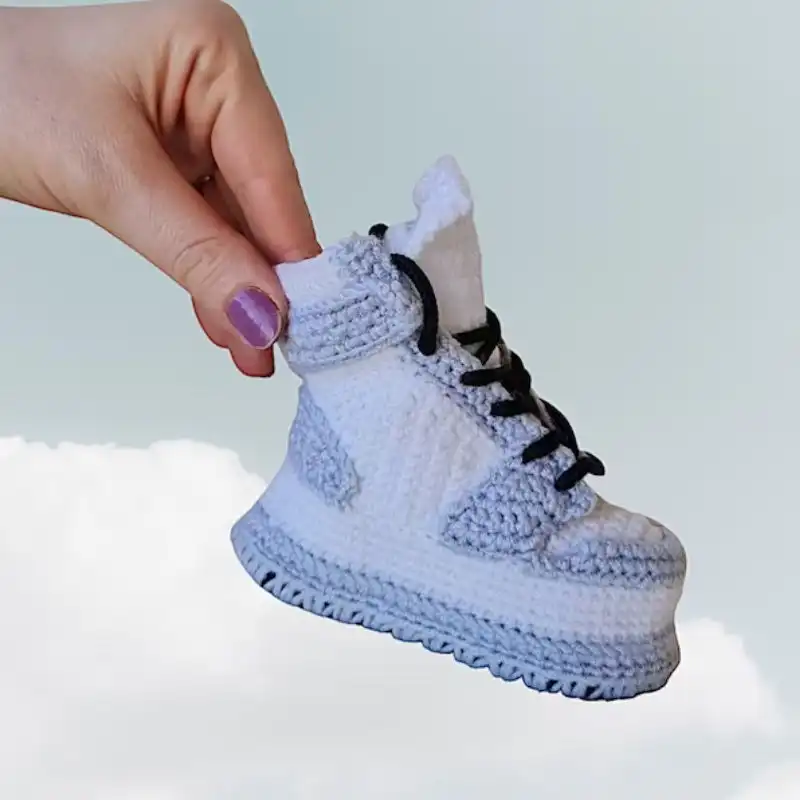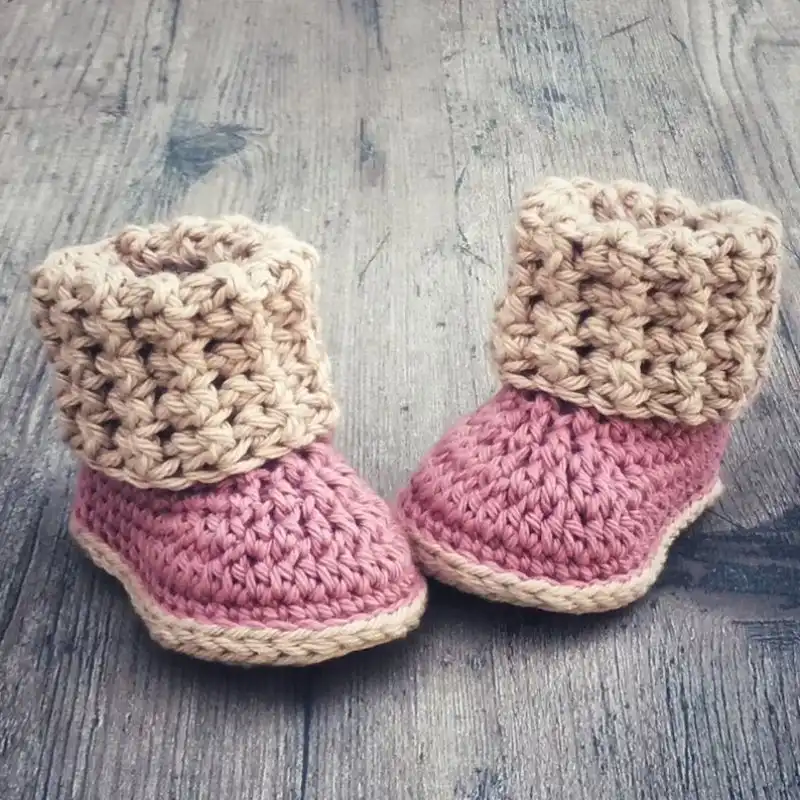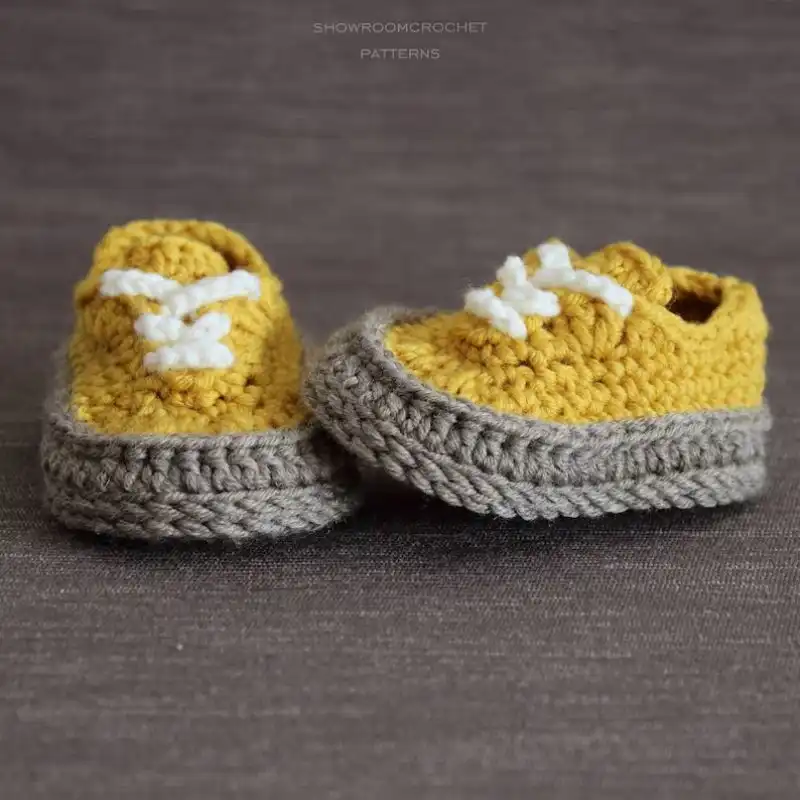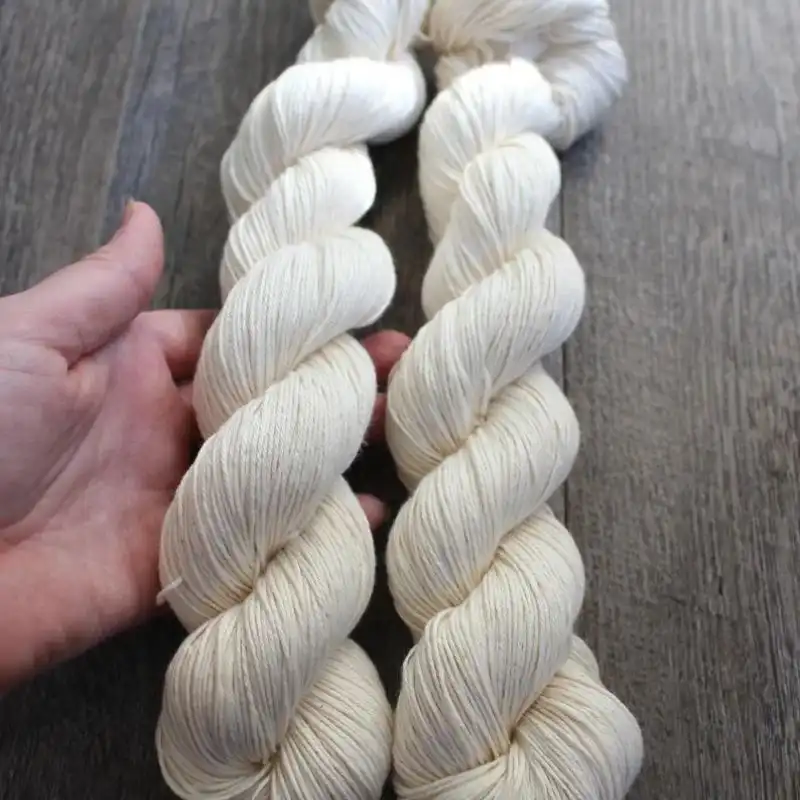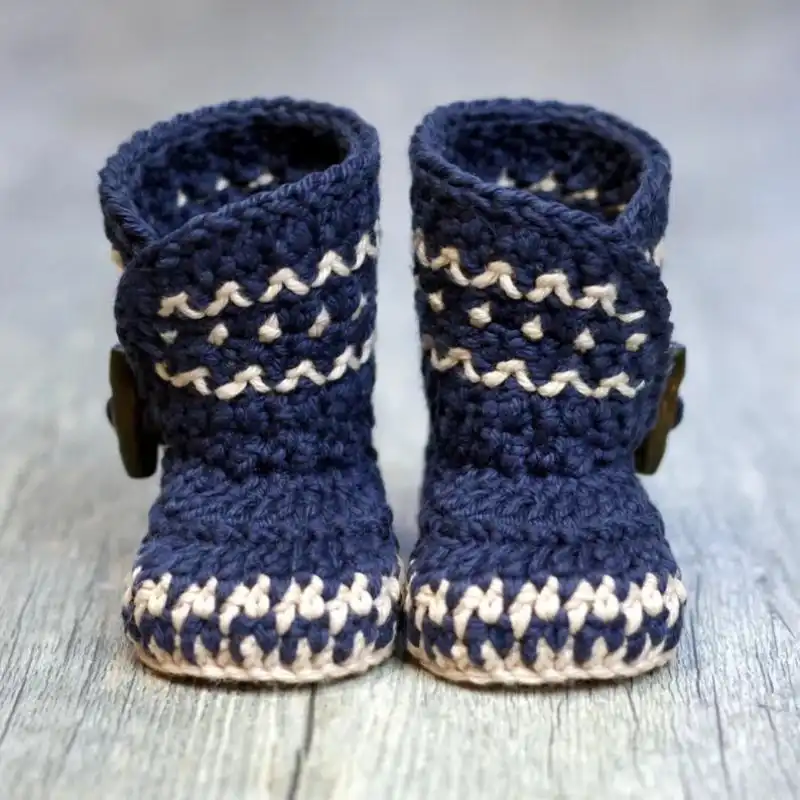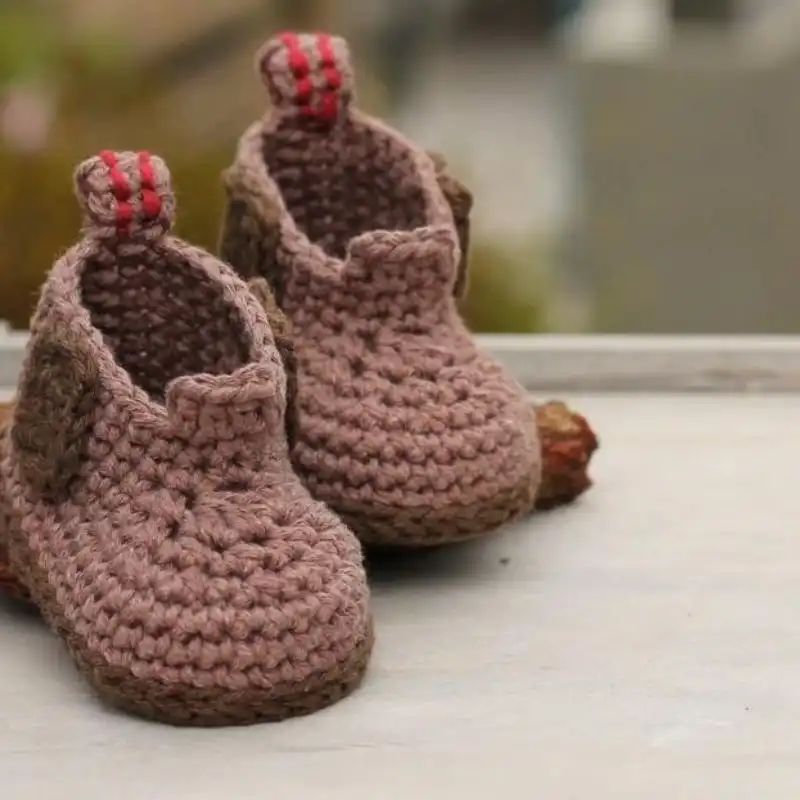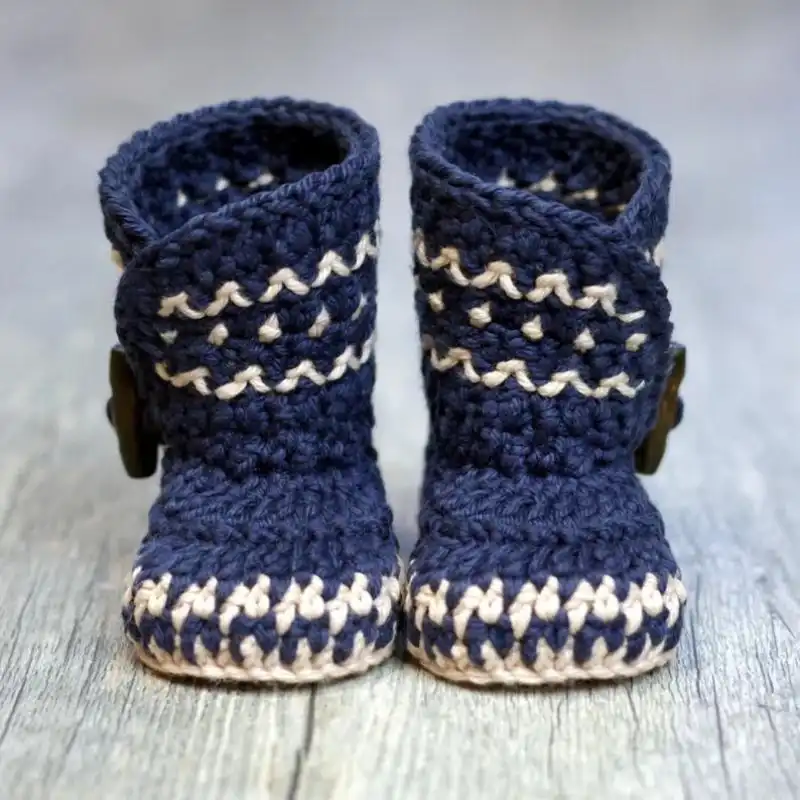We know what it’s like to struggle to find just the right gift for a new bundle of joy. You want to give something practical that the parents will need for their new arrival but don’t want to get something cliché and boring.
“Another pack of white vests? You shouldn’t have!” Then again you could think outside the box and get something personal, thoughtful, and creative which they may never end up taking out of the box.

No one wants to show up at a baby shower empty-handed. Nobody wants to be the one to give something inappropriate, either. Imagine the embarrassment of witnessing a highly hormonal pregnant woman unwrap a beautiful teddy bear only to find out that the mother-to-be doesn’t agree with bears as a comfort toy since they can be scary.
Bye-bye bear. The tears will inevitably flow, including yours, since you spent hours trying to choose just the right gender-neutral teddy for the job.
So, how do you choose just the right gift for a new miracle that you’ve not even met? We have the answer. No matter what the parent’s child-rearing ethos is, all parents agree that babies and their ten tiny toes need to be warm.
If you are a seasoned pro at crochet or even if you are completely new to it, there is a baby shoe pattern here that you can do. Baby shoes are always a thoughtful gift, but handmade ones are even more special.
So here are twenty-three of the best baby shoe crochet patterns out there. Happy crafting, everyone.
Is It Worth To Crochet Baby Shoes?
The worth of crocheting baby shoes can be viewed from multiple perspectives. Economically, handmade shoes might be more expensive in materials and time than store-bought ones.
However, they offer unique customization in terms of fit and design. Emotionally, the value is often priceless; creating something by hand for a new life adds sentimental worth that can’t be measured in dollars. These shoes can become treasured keepsakes, passed down through generations.
Skill-wise, it’s an excellent project for honing crochet techniques, offering a sense of accomplishment. Additionally, handmade baby shoes make thoughtful, personalized gifts that many recipients highly cherish. So, the “worth” can be both tangible and intangible.
Popularity of Crochet Baby Shoes
Crochet baby shoes have seen a significant rise in popularity over the last few years. The trend can be attributed to several factors, including the growing demand for personalized, unique baby items, the rise of DIY culture, and the increased appreciation for handcrafted goods.
Firstly, crochet baby shoes offer a level of customization and individuality that mass-produced products often cannot match. Parents, relatives, and friends seeking something special and unique for their little ones are turning to these handcrafted shoes.
They often come in a wide array of designs, colors, and styles, from traditional booties to modern sneakers, allowing for personalization that suits each child’s character or a family’s style.
Secondly, the popularity of crochet baby shoes is part of the broader rise in the DIY culture, fostered by online platforms such as Etsy, Pinterest, and Instagram. The do-it-yourself movement encourages individuals to create, rather than purchase items.
Many people find it rewarding and therapeutic to create something with their own hands, and crochet baby shoes are an accessible and practical project for beginners and experts alike. There are countless tutorials, patterns, and guides available online, enabling anyone with a set of crochet hooks and some yarn to create a pair of these adorable shoes.
Lastly, in an era of fast fashion and mass production, there’s a growing appreciation for artisanal, handcrafted items. Crochet baby shoes are no exception.
They are seen as a sustainable and ethical choice, often made from organic, hypoallergenic materials, which are safe for baby’s delicate skin.
Handmade items also have an inherent sentimental value, making them heirloom pieces that can be passed down through generations.
Popular Stitches To Crochet Baby Shoes
Crocheting baby shoes can be a delightful project for experienced crocheters as well as beginners. There are a variety of stitch patterns that can be employed to create different types of shoes, ranging from booties to sandals. Here are some popular stitches often used in crocheting baby shoes:
Basic Stitches
- Single Crochet (sc): This is a basic stitch that’s commonly used for the sole and sometimes the upper parts of the shoe.
- Half Double Crochet (hdc): This stitch provides a bit more height than a single crochet and is often used for the upper shoe or the cuff for a bit of texture.
- Double Crochet (dc): Used often for creating a lacy or more airy feel, especially for summer booties.
Textured Stitches
- Bobble Stitch: This stitch adds texture and can be used to make anti-slip soles or decorative uppers.
- Puff Stitch: Similar to the bobble stitch but less pronounced. It adds a subtle texture.
- Shell Stitch: Often used for decorative edging or to make the upper part of sandals or open booties.
Ribbing and Elastic Stitches
- Front Post and Back Post Double Crochet (FPdc and BPdc): Used for creating ribbing, often seen on the cuffs of booties.
- Single Crochet in Back Loop Only (sc BLO): Creates a ribbed effect, often used for the soles to add a bit more grip.
Decorative Stitches
- Picot Stitch: Commonly used for decorative edging.
- Cluster Stitch: Used for adding ornate touches to the design.
- V-Stitch: Creates a lacy effect, often used in more decorative or summery designs.
Advanced Stitches
- Crocodile Stitch: This stitch creates a scale-like texture and is often used for fancier booties resembling mermaid tails or dragon feet.
- Cable Stitch: Requires some experience but adds a beautiful, intricate texture to the design.
Multi-Stitch Patterns
Some designs use a combination of stitches to create patterns, such as alternating single-crochet and double-crochet stitches or using a sequence of stitches to create stripes or other textures.
RELATED: How To Make Crossed Stitch In Crochet With Tips For Flawless Handiwork?
Benefits Of Crochet Baby Shoes
Crochet baby shoes offer a multitude of benefits, both practical and aesthetic. Here are a few key advantages:
- Comfort: Crochet baby shoes are usually made of soft materials like cotton or wool, making them comfortable for a baby’s delicate feet. They are lightweight and flexible, allowing for easy movement and room for the baby’s foot to grow and develop naturally.
- Warmth: Crocheted shoes provide good insulation, making them a great choice for colder climates or for keeping a baby’s feet warm in air-conditioned environments.
- Hypoallergenic: When made with hypoallergenic materials, these shoes are a safe choice for babies with sensitive skin or allergies. Natural fibers like cotton or bamboo are often used, which are gentle on the skin and reduce the risk of irritation.
- Customization: One of the major benefits of crochet baby shoes is the ability to customize them. They can be made in any color, style, or size, and you can even add personal touches like initials or motifs. This makes them perfect for gifts or special occasions.
- Durability: Despite their delicate appearance, crochet baby shoes can be quite durable, particularly if properly cared for. They can even become heirloom items, passed down from one generation to the next.
- Sustainability: For environmentally-conscious parents, crochet baby shoes are an excellent choice. They can be made from sustainable materials and, unlike mass-produced plastic shoes, they biodegrade at the end of their life cycle. Additionally, making your own baby shoes at home can also reduce carbon emissions associated with transportation.
- Skill development: For those who make them, crocheting baby shoes can help improve fine motor skills, reduce stress, and provide a creative outlet. It can also be a way to earn extra income, with many crafters selling their handmade shoes online.
- Affordability: Crochet baby shoes can be a cost-effective choice. If you know how to crochet, all you need is a pattern, some yarn, and a little time. Even if you’re buying them, handmade crochet shoes often cost less than designer baby shoes.
- Supporting small businesses: Buying crochet baby shoes often means supporting small businesses or individual crafters, which is a great way to contribute to your local economy or support independent artists and makers globally.
Essential Tools And Materials
Glossary Of Common Crochet Stitches And Techniques
- Chain (ch): This is the most basic crochet stitch and forms the foundation of most crochet projects. You make a slipknot, then yarn over (wrap the yarn over your hook) and draw through to create a loop (a chain).
- Slip Stitch (sl st): This is a simple stitch used to join work when working in the round or to move across stitches without adding height. Insert your hook into the stitch, yarn over, and draw the yarn through both loops on your hook.
- Single Crochet (sc): This is the most basic and compact stitch. Insert your hook into the stitch, yarn over, draw through, yarn over again and draw through both loops on your hook.
- Half Double Crochet (hdc): A taller stitch than single crochet. Yarn over, insert your hook into the stitch, yarn over, draw through, yarn over again and draw through all three loops on your hook.
- Double Crochet (dc): Another tall stitch. Yarn over, insert your hook into the stitch, yarn over, draw through, yarn over, draw through the first two loops, yarn over again and draw through the last two loops.
- Treble Crochet (tr): This is a very tall stitch. Yarn over twice, insert your hook into the stitch, yarn over, draw through, yarn over, draw through the first two loops, yarn over, draw through the next two loops, yarn over again and draw through the last two loops.
- Magic Ring or Magic Circle: This is a technique used to start a project in the round and creates a tightly closed center. It’s often used for the center of granny squares or the start of amigurumi projects.
- Increase (inc): This involves making two stitches in the same stitch to widen the work, often used when making a flat circle or adjusting the size of a project.
- Decrease (dec): This involves combining two stitches into one to narrow the work, often used when shaping a project.
- Fasten Off (FO): This is the process of securing the last stitch of your work so it doesn’t unravel. You cut the yarn, leaving a tail, and pull it through the last loop on your hook.
- Work in the Round: This means to work in a continuous spiral without joining the rows.
- Work in Rows: This means to work back and forth, turning your work at the end of each row.
- Yarn Over (YO): This refers to wrapping the yarn over your crochet hook.
- Skip (sk): This involves skipping the next stitch and crocheting into the following one.
- Gauge: This refers to the number of stitches and rows in a specified size (usually 1 inch or 4 inches). It’s important to match the pattern’s gauge to ensure the final project fits correctly.
Understanding Crochet Stitches & Techniques For Baby Shoes
Understanding crochet stitches and techniques for baby shoes is a skill that requires a combination of reading, practicing, and sometimes even watching video tutorials for a more visual explanation. Here’s how you can familiarize yourself with the essentials:
- Basic Stitches: Know the basic stitches like the chain (ch), single crochet (sc), half-double crochet (hdc), double crochet (dc), and slip stitch (sl st).
- Reading Patterns: Learn how to read crochet patterns and abbreviations. Baby shoe patterns often have specific instructions that are important to follow for the right shape and size.
- Gauge: Make a gauge swatch to ensure your stitches are sized correctly. This is crucial for baby shoes, where fit matters.
- Increases and Decreases: Master increasing and decreasing stitches to shape the shoe. Increases add width and decreases help taper the design.
- Joining Techniques: Learn methods like the seamless join to finish rounds neatly; you often have to work in rounds to make baby shoes.
- Special Stitches: Some patterns may require special stitches like the popcorn or bobble stitch for added texture.
- Assembly: Baby shoes often come in multiple parts, like the sole, upper part, and sometimes even straps. Learn how to assemble these correctly.
- Finishing Touches: Understand how to add buttons, loops, or other fasteners, as many baby shoe patterns include these elements.
- Yarn Choice: Choose the appropriate yarn. For baby shoes, soft, washable, and hypoallergenic yarns are often recommended.
- Practice: The best way to understand is by doing. Start with a simple pattern and work your way up to more complex designs.
- Video Tutorials: Sometimes, watching someone else do it can clarify complex instructions. YouTube is an excellent resource for this.
- Trial and Error: Don’t be afraid to make mistakes; unraveling and redoing is a part of the learning process.
Abbreviations Of Common Baby Shoe Crochet Pattern
Basic Stitch Abbreviations
- ch: Chain
- sl st: Slip Stitch
- sc: Single Crochet
- hdc: Half Double Crochet
- dc: Double Crochet
- tr: Treble Crochet
Increasing and Decreasing
- inc: Increase (usually involves making two stitches into one stitch from the previous row)
- dec: Decrease (usually involves reducing two stitches from the previous row into one stitch)
- 2sctog: 2 Single Crochets Together (a type of decrease)
- 2dctog: 2 Double Crochets Together (a type of decrease)
Working in Rounds
- rnd: Round
- beg: Beginning
- rep: Repeat
- st(s): Stitch(es)
- sp(s): Space(s)
Special Techniques
- fpdc: Front Post Double Crochet
- bpdc: Back Post Double Crochet
- sk: Skip
- yo: Yarn Over
Miscellaneous
- RS: Right Side
- WS: Wrong Side
- pm: Place Marker
- sm: Slip Marker
- [ ]: Work sequence of stitches within brackets as many times as directed
- ( ): Work stitches within parentheses into the same stitch
Which Yarn Is Best For Crochet Baby Shoes?
When choosing yarn for crochet baby shoes, there are several factors to consider. The yarn should be soft, comfortable, durable, and washable. Here are some types of yarn that are generally well-suited for this type of project:
- Cotton Yarn: This is one of the best choices for crochet baby shoes. It’s soft, durable, and machine washable, which is essential for baby items. It is also breathable, making it a good option for warmer weather or for babies who tend to get hot.
- Bamboo Yarn: Bamboo yarn is incredibly soft and silky, making it perfect for delicate baby skin. It’s also hypoallergenic and has antibacterial properties, which is an added advantage for babies. Like cotton, it is breathable and good for warm climates.
- Acrylic Yarn: This type of yarn is synthetic, which makes it durable and easy to care for. It’s often machine washable and comes in a wide variety of colors. However, it’s not as breathable as natural fibers, so it might not be the best choice for hot climates.
- Baby Yarn: This is a specific category of yarn that is designed for crafting baby items. It is usually extra soft and machine washable. Baby yarn can come in various materials, including cotton, bamboo, and acrylic.
- Blend Yarns: These yarns combine the properties of different materials. For example, a cotton-acrylic blend can offer the breathability of cotton with the durability and ease of care of acrylic.
In addition to the type of yarn, you’ll also want to consider the weight of the yarn. For baby shoes, a light to medium weight yarn (like DK or worsted weight) is often a good choice. It’s thick enough to provide structure and warmth but thin enough to ensure the shoes aren’t too bulky.
How Much Yarn Do I Need To Crochet Baby Shoes?
The amount of yarn you’ll need to crochet baby shoes can vary significantly depending on a few factors:
- Pattern: Different patterns require different amounts of yarn. Always refer to your specific pattern for the most accurate estimate.
- Yarn Weight: The weight of the yarn (e.g., fingering, sport, DK, worsted, etc.) will influence how much you need. Lighter yarns generally require more yardage, while heavier yarns require less.
- Hook Size: A larger hook may consume more yarn than a smaller one, although the difference is usually minor for small projects like baby shoes.
- Stitch Complexity: More complex stitches may use more yarn.
- Size: Baby shoes for newborns will use less yarn than those for older babies.
- Additional Features: Design elements like straps, laces, or decorative stitches can require extra yarn.
General Estimates
- Newborn to 3 Months: Around 50-100 yards (45-90 meters) of yarn are generally sufficient for making an essential pair of baby shoes.
- 3 to 6 Months: You may require a bit more, perhaps around 100-150 yards (90-135 meters), depending on the design.
- 6 to 12 Months: For larger sizes, 150-200 yards (135-180 meters) is a reasonable estimate for a pair.
How To Determine Size For Crochet Baby Shoes?
Determining the correct size for crochet baby shoes can be a bit of a challenge due to the varying foot sizes and growth rates of babies. However, the following tips should help:
Measure the Baby’s Foot: If possible, measure the length of the baby’s foot from heel to the tip of the longest toe. This measurement will be the most accurate, especially if the baby is in your care or close by. Use a soft tape measure for the best results.
Use a Size Chart: If you cannot measure the baby’s foot directly, refer to a standard baby shoe size chart. These charts provide average foot lengths for each age group. Here is a basic guide:
- Newborn: 3.5 inches (9 cm)
- 3 months: 4 inches (10 cm)
- 6 months: 4.5 inches (11 cm)
- 9 months: 5 inches (12.5 cm)
- 12 months: 5.5 inches (14 cm)
Consider Room for Growth: Babies grow quickly, so consider making the shoes a little bigger than the current measurement. This ensures that the baby can wear them for a longer time.
Check the Pattern Sizing: If you are following a pattern, it will usually indicate the size of the finished shoes and may even provide instructions for adjusting the size. Always check your gauge to ensure your stitches match those of the pattern, as this can significantly affect the size of the finished shoe.
Try On During Construction: If the baby is present, try the shoe on during the construction process to ensure a good fit.
Is It Beginner-Friendly?
Yes, crocheting baby shoes can certainly be beginner-friendly. However, the level of difficulty can vary greatly depending on the pattern you choose. Some patterns use only basic stitches and techniques, making them accessible to those new to crochet.
Here are a few reasons why crocheting baby shoes can be a good project for beginners:
Size: Baby shoes are small, which means you can complete a pair relatively quickly. This makes them a satisfying project for beginners who are still building up their crochet stamina.
Skill Building: While basic baby shoe patterns don’t require advanced techniques, they can still help you practice and reinforce essential skills like increasing, decreasing, and working in the round.
Materials: Baby shoes don’t require a lot of yarn, which makes them a relatively inexpensive project. They’re a great way to use up leftover yarn from larger projects.
Flexibility: Baby shoes can be as simple or as elaborate as you want them to be. As you gain confidence, you can experiment with different colors, stitches, and embellishments.
To get started, look for a pattern specifically designed for beginners. These patterns will typically use simple stitches like the single crochet and double crochet, and they should include step-by-step instructions. YouTube tutorials can also be a great resource for beginners, as they allow you to see each step in action.
How To Crochet A Basic Beginner-Friendly Baby Shoe?
Crocheting a basic baby shoe is a project that even a beginner can tackle. Below is a simple guide to creating a beginner-friendly crochet baby shoe. This pattern will make a newborn-sized shoe (approximately 3.5 inches long), and it mainly uses basic stitches like chain (ch), single crochet (sc), and slip stitch (sl st).
Materials
- Worsted weight yarn (about 50 grams)
- Size G (4 mm) crochet hook
- Yarn needle
- Stitch marker
- 2 small buttons for decoration (optional)
Abbreviations
- ch: Chain
- sc: Single Crochet
- sl st: Slip Stitch
- st: Stitch
- sts: Stitches
- inc: Increase (2 sc in the same st)
Sole
- Row 1: ch 10
- Row 2: Starting from the 2nd ch from the hook, sc in each ch across, turn. (9 sts)
- Row 3: ch 1, 2 sc in first st (inc), sc in each st across to last st, 2 sc in last st, turn. (11 sts)
- Row 4: ch 1, sc in each st across, turn. (11 sts)
- Row 5: Repeat Row 4.
- Row 6: Repeat Row 3. (13 sts)
- Row 7-8: Repeat Row 4.
Fasten off, leaving a long tail for sewing.
Upper Shoe
Attach yarn to one end of the sole.
- Round 1: ch 1, sc evenly around the sole, sl st to first sc to join. Place stitch marker.
- Round 2: ch 1, sc in each st around, sl st to join.
- Round 3: ch 1, sc in the next 5 sts, [inc] 4 times, sc in the remaining sts, sl st to join.
- Round 4: ch 1, sc in each st around, sl st to join.
Fasten off, leaving a tail for sewing.
Assembly
Fold the upper part of the shoe over the sole.
Using a yarn needle and the long tail left from the sole, sew the upper part to the sole.
Finishing
Weave in all ends securely. Repeat all steps for the second shoe, making sure it’s the same size as the first.
23 Baby Shoe Crochet Patterns
1. Baby Clog Shoe Crochet Pattern
These little clogs are just adorable for any baby. These would be an especially thoughtful gift for those of Dutch or European heritage, but they’ll be just as cute on any little darling.
If these little clogs are for your own little mouse, then you ought to know that a matching pattern for adult feet is also available, so you can match. These aren’t the warmest shoes on our list, though, so they’d be best suited to a spring or summer arrival than a fall or winter baby.
Suggested Yarn: Worsted weight acrylic yarn
Difficulty Level: Intermediate
Yarn Weight: Medium (4)
Crochet Hook Size: 4.5 mm (G-6)
2. Baby Sneaker Crochet Pattern
TThe idea of a baby needing athletic shoes may be a little whimsical, but we love the idea of a little dude matching his daddy’s footwear.
Then again, with a little imagination and some strategic pink placement, these would work for a little girl too. Who knows, maybe she’ll be an Olympic sprinter and one day a picture of her with her first pair of sneakers will mean a lot to her and to you.
Suggested Yarn: Sport weight cotton yarn
Difficulty Level: Beginner
Yarn Weight: Light (3)
Crochet Hook Size: 3.5 mm (E-4)
3. T-Strap Baby Shoes Crochet Pattern
These are the ones to go for if you’re positive they are for a little girl’s feet. Anyone can misread a scan, but these aren’t the most gender-neutral of our selection.
They look like little Mary-Jane-style flats and would go with any outfit. Crochet yarn sure is warm, but these will best suit a summer outing. Pair these with some cute frilled ankle socks and let the cooing commence.
Suggested Yarn: DK weight merino wool yarn
Difficulty Level: Intermediate
Yarn Weight: Light (3)
Crochet Hook Size: 4 mm (G-6)
4. Loafer Crochet Baby Shoes
These little loafers are perfect for the new heartbreaker on the block. If you want some stylish shoes that are just the right side of dressy, then these are for you.
They would probably suit a baby boy more than a girl, but as with most of the patterns, it depends on what you do with them.
Suggested Yarn: Aran weight acrylic yarn
Difficulty Level: Easy
Yarn Weight: Medium (4)
Crochet Hook Size: 5 mm (H-8)
5. Baby Work Boots
We cannot get over how cute these are. There’s no need to go gender-specific on these. While Dock Martins and the like are popular, there are also fashionable alternatives for all genders. These Baby Work Boots look warm as well as practical.
Mini-me items are so cute always, but so ‘in’ right now, so now is absolutely the time to indulge.
Suggested Yarn: Bulky weight wool-blend yarn
Difficulty Level: Intermediate
Yarn Weight: Bulky (5)
Crochet Hook Size: 6 mm (J-10)
6. Kimono-Style Baby Booties Crochet Pattern
These are the classic sort of baby booties you could expect to buy from the store, but handmade is so much more personal. These are warm and practical, gender-neutral booties.
They have a bit of a twist with the wrap front kimono-style, though, so they are fun as well as sensible. Give sleep-deprived parents a helping hand and give gifts in colors that will mix and match with most things.
Suggested Yarn: Fingering weight cotton yarn
Difficulty Level: Intermediate
Yarn Weight: Light (3)
Crochet Hook Size: 3.25 mm (D-3)
7. Flower Detail Baby Shoe Crochet Pattern
These girly shoes are perfect if you know your little one is going to be a flower girl sometime soon. Whoever they’re for, these shoes have the wow factor for sure. The cute crochet flowers and petals are something else.
If you’re looking for some cute, unique shoes with an easy-to-follow pattern, you’ve found them.
Suggested Yarn: Sport weight acrylic yarn
Difficulty Level: Beginner
Yarn Weight: Light (3)
Crochet Hook Size: 4 mm (G-6)
8. Reindeer Baby Booties Crochet Pattern
Forget about the baby shower, how about baby’s first Christmas? These cute little reindeer have antlers and Rudolph’s signature red nose. The little ears are simply adorable, too.
These will be such a hit on Christmas morning for any Yuletide-loving parent. They are also the perfect accessory to complete the requisite baby’s first Christmas photo.
Suggested Yarn: Worsted weight acrylic yarn
Difficulty Level: Intermediate
Yarn Weight: Medium (4)
Crochet Hook Size: 4.5 mm (G-6)
9. Doris The Cow Booties Crochet Pattern
If you know a little country bumpkin, then these are the shoes for them. While you may think that baby shoes in the shape of a cow might be downright ugly, you couldn’t be more wrong about these.
Whoever Doris was, if she was the inspiration for these booties, then we guarantee she was a looker. These farmyard-inspired shoes are seriously cute.
Suggested Yarn: Bulky weight polyester blend yarn
Difficulty Level: Easy
Yarn Weight: Bulky (5)
Crochet Hook Size: 5.5 mm (I-9)
10. Baby Boy’s Taika Boot Crochet Pattern
These are such a perfect mix of functional and stylish for the modern mini gent. The laces actually work too, which any parent knows is a serious bonus for baby booties.
Mix up the colors and play with the contrasting trims to find the perfect, cool combination for your little lamb.
Suggested Yarn: DK weight merino wool yarn
Difficulty Level: Intermediate
Yarn Weight: Light (3)
Crochet Hook Size: 4 mm (G-6)
11. ‘Air Jordan’ Style High-Top Sneaker Baby Crochet Pattern
These would be a cute addition to any baby’s wardrobe. You could stick with the classic red, white, and black style, or get funky with the color scheme. It’s entirely up to you.
One good thing about a high-top sneaker style for a little one is that it’ll keep their ankles warm and keep their little leggings tucked in tight. Stylish and winter-proof, what’s not to love?
Suggested Yarn: Sport weight cotton yarn
Difficulty Level: Intermediate
Yarn Weight: Light (3)
Crochet Hook Size: 4 mm (G-6)
12. Newborn Crochet Baby Sneakers Pattern
These classic little sneakers will be great for any gender and can be done in a variety of color options since you can choose colors for the trim, the laces, and two for the main body of the shoe which is two-tone in the picture.
Newborn Crochet Baby Sneakers Pattern
13. Cuffed Baby Booties Crochet Pattern
These are the ultimate in winter footwear as far as we’re concerned. Unlike some knitted booties, these don’t resemble socks in the slightest but look like real tiny boots.
The warm cuffed effect leaves no doubt that winter chills are not getting in there. For warm, rustic, yet cute boots, you won’t need to look any further than these.
Suggested Yarn: Bulky weight wool-blend yarn
Difficulty Level: Easy
Yarn Weight: Bulky (5)
Crochet Hook Size: 5 mm (H-8)
14. Crocodile Stitch Baby Booties Crochet Pattern
These booties might seem daunting to the beginner, but you can’t argue that the finished product is stunning. We’re especially in love with the ombre rainbow colors they have chosen for the example picture.
These boots would be great presents for a little boy or girl but might be easier for someone to make who has a little experience under their crocheted belt, as the crocodile stitch can be tricky.
Suggested Yarn: Sport weight acrylic yarn
Difficulty Level: Intermediate
Yarn Weight: Light (3)
Crochet Hook Size: 4 mm (G-6)
15. Classic Baby Sneaker Crochet Pattern
These shoes are all about vibrant colors. Go big or go home. These easy-to-make shoes are great for little boys or girls who have a lot of color in their tiny wardrobes.
Make them in all different colors to go with every mood and outfit. You won’t be sorry. They’re cool, casual, and contemporary shoes for the thoroughly modern Miss or Mr.
Suggested Yarn: DK weight merino wool yarn
Difficulty Level: Intermediate
Yarn Weight: Sport or DK
Crochet Hook Size: 4.0 mm (US G-6)
16. Crochet Pattern Ballerina Flats
We just can’t get enough of these fairy-like strappy ballet flats. These would be perfectly placed in a newborn or toddler photo shoot. Dancer-themed though they might be, they wouldn’t be out of place at a formal occasion, like a wedding or party.
The tiny, delicate crochet flowers are just the right touch of pretty without tipping over into gaudy. With straps like that, we think they stand a good chance of staying on, too. Bonus!
Suggested Yarn: Fingering weight cotton yarn
Difficulty Level: Intermediate
Yarn Weight: Light (3)
Crochet Hook Size: 3.5 mm (E-4)
17. Baby Cowboy Cowgirl Boots Crochet Pattern
Embrace your inner cowboy or cowgirl in these adorable western-style boots.
They do go high up the leg like adult cowboy boots, so they should be pretty warm too for the winter months. The little hearts make them cute for little cowgirls, but in a brown or blue color, they would do just as well for a baby cowboy.
Suggested Yarn: Worsted weight acrylic yarn
Difficulty Level: Intermediate
Yarn Weight: Medium (4)
Crochet Hook Size: 4.5 mm (G-6)
18. Dakota Style Baby Sneakers Boot Crochet Pattern
These little fringed booties are a great choice for fall and winter. Choose a neutral color for the boot and fringe and a contrasting pop of color for the bow at the back.
The pattern is clear and easy to follow, as long as you make sure you select the right language, that is.
Suggested Yarn: DK weight merino wool yarn
Difficulty Level: Intermediate
Yarn Weight: Light (3)
Crochet Hook Size: 4 mm (G-6)
19. Intrepid Snow Boot Style Baby Shoes Crochet Pattern
These snow boot style booties are beautiful to look at. The two-tone color boot is eye-catching in itself, while the clear adventure theme makes these great gifts for outdoorsy families.
We’re especially loving the faux fur trim, which ties the whole concept together. It’s important to remember, though, with such authentic-looking hiking boots that these are in no way waterproof or suitable for actual snow.
Fortunately, your little angel isn’t likely to be wading through snowdrifts for quite some time yet. By then, you’ll need something a bit more weatherproof than crochet yarn.
Suggested Yarn: Bulky weight polyester blend yarn
Difficulty Level: Easy
Yarn Weight: Bulky (5)
Crochet Hook Size: 5.5 mm (I-9)
20. Construction Boots Baby Shoe Crochet Pattern
These little slip-on boots are marketed for baby boys, but we think they’d be as adorable on a baby girl. They look a little like the fashionable Chelsea boots which we see a lot of nowadays.
The color is up to you, but the neutral gray-brown they have chosen seems to be ideal for hiding marks and keeping tiny toes warm.
Suggested Yarn: Worsted weight acrylic yarn
Difficulty Level: Intermediate
Yarn Weight: Medium (4)
Crochet Hook Size: 4.5 mm (G-6)
21. Baby Slouch Boot Crochet Pattern
These pretty embellished boots are just the right side of simple to be both pretty and practical. Those are two words any girl knows should describe the majority of her wardrobe.
These warm-looking winter booties feature an adorable little decorative bow that will have all the other moms asking where you got them from.
Suggested Yarn: Fingering weight cotton yarn
Difficulty Level: Intermediate
Yarn Weight: Light (3)
Crochet Hook Size: 3.5 mm (E-4)
22. Dakota Baby Boot Crochet Pattern
These Dakota boots aren’t like the fringed ones we saw earlier. These are gender-neutral and suitable for any baby. The fun pattern isn’t overbearing, but it does make them a little different from the type of booties you might find in the mall. That’s what we like about them.
They’re rustic and earthy but winter warm too.
Suggested Yarn: DK weight merino wool yarn
Difficulty Level: Intermediate
Yarn Weight: Light (3)
Crochet Hook Size: 4 mm (G-6)
23. Christmas Elf Shoe And Hat Set Crochet Pattern
We have arguably saved the best until last, but it’s definitely not a pattern for all year-round. Complete your little elf’s Christmas outfit with this double cute elf hat and elf shoe crochet pattern.
Red and green may not be your favorite colors for eleven months of the year, but in December they kind of rule. This pattern is available in four sizes, so it’s suitable for slightly bigger elves too.
What is more adorable and perilous than a toddler who is determined to help mommy with the decorations? A determined, helpful toddler in an elf costume, that’s what. Get your own Santa’s little helper by crocheting this festive design yourself.
Suggested Yarn: Worsted weight acrylic yarn
Difficulty Level: Intermediate
Yarn Weight: Light (3)
Crochet Hook Size: 4.5 mm (G-6)
How To Block The Crochet Baby Shoes?
Blocking is a technique used in crochet and knitting to shape and set your finished piece. It can be particularly useful for crochet baby shoes to ensure they have a neat, uniform shape. Here are the steps to block crochet baby shoes:
Gather Your Supplies: You’ll need water, a mild soap (optional), towels, and a form to shape the shoes. The form could be custom-made blockers, a small canister or bottle, or even a piece of cardboard cut to the shape of the shoe.
Wet the Shoes: Soak the shoes in warm water until they are completely wet. If desired, you can add a bit of mild soap to the water. Once the shoes are thoroughly wet, gently remove them from the water and press out the excess water. Do not wring or twist them as this can distort the stitches.
Dry the Shoes: Lay a towel out flat, place the shoes on it, and roll it up to absorb most of the water.
Shape the Shoes: After unrolling the towel, reshape the shoes on your blocking forms. If you’re using custom-made blockers, simply slip the shoes onto them.
If you’re using a makeshift form, carefully mold the shoes around the form to get the desired shape.
Dry Completely: Allow the shoes to dry completely while on the forms. This may take a day or two, depending on the thickness of the yarn and the humidity in your area. Make sure they are fully dry before removing them from the forms to prevent them from losing their shape.
Blocking can make a big difference in the look and fit of crochet baby shoes. It’s a simple process that can take your finished project to the next level.
However, it’s important to note that not all yarns respond well to blocking, so it’s a good idea to test a swatch before blocking your finished shoes. Synthetic yarns, in particular, may not hold a blocked shape as well as natural fibers.
Suggestions To Add A Personal Touch
Adding a personal touch to crochet baby shoes can make them even more special, whether you’re creating them for your own child, as a gift, or to sell. Here are some ways to personalize your crochet baby shoes:
- Choose Unique Colors: Perhaps the simplest way to personalize crochet baby shoes is to choose colors that reflect the personality of the baby or the preferences of the parents. You could even choose colors to match a specific outfit or nursery decor.
- Add Embellishments: Consider adding embellishments like buttons, ribbons, bows, or beads. For example, you could attach a cute button to the strap of a Mary Jane shoe or tie a ribbon around the ankle of a bootie. Just ensure any additions are securely fastened to prevent them from becoming a choking hazard.
- Embroidery: Embroider the baby’s initials or a small design onto the shoes. This could be done with a contrasting color of yarn for a standout effect.
- Texture and Stitch Patterns: Use interesting stitch patterns to add texture and personality. Bobbles, puff stitches, and shell stitches can all add unique touches to your baby shoes.
- Themes: If the baby has a themed nursery or if the parents have certain interests, consider incorporating these themes into the shoes. For example, you could make animal-shaped shoes for a jungle-themed nursery or add a sailboat applique for a nautical theme.
- Different Yarns: Use yarns with unique characteristics, such as a gentle ombre yarn for a gradient effect, or a soft, fuzzy yarn for a plush feel.
- Soles: For walking babies, consider adding leather or non-slip fabric soles to the shoes. Not only does this make the shoes more practical, but it also gives them a professional touch.
Do’s & Don’ts For A Safe Baby Shoes
When it comes to creating or selecting baby shoes, safety and comfort are paramount. Here are some do’s and don’ts to consider:
Do’s
- Choose Soft Material: Always opt for soft, breathable materials like cotton or soft leather to ensure that the baby’s feet can breathe and move naturally.
- Flexible Soles: Go for soft, flexible soles that allow natural movement of the feet, especially for babies who are just learning to walk.
- Proper Sizing: Make sure the shoes are the right size. They shouldn’t be too small to restrict movement or too large to cause tripping.
- Wide Toe Box: Ensure the toe box is wide enough for little toes to move freely.
- Adjustable Fastenings: Opt for shoes with adjustable fastenings like Velcro or soft elastic to help keep the shoe securely on the foot without being too tight.
- Check for Objects: Before putting on the shoe, always check the insides to ensure that there are no objects, tags, or seams that could irritate the baby’s skin.
- Easy to Put On and Take Off: Choose shoes that are easy to slip on and off but stay securely on the feet when the baby moves.
- Test for Slip: If you’re making crochet shoes, consider adding a non-slip sole or using textured stitches that can help grip the floor.
- Washable: Make sure the materials you choose are easy to clean and machine washable, or at least easy to spot clean.
- Quality Control: If you’re making the shoes, double-check your work to ensure there are no loose threads, buttons, or beads that could be a choking hazard.
Don’ts
- Avoid Hard Soles for Beginners: Babies learning to walk need to feel the ground beneath them to help with balance, so avoid hard soles initially.
- Skip the Heels: Heeled shoes are not appropriate for babies as they can affect the natural development of the feet.
- Avoid Over-Decoration: Avoid adding small, detachable decorations like buttons, rhinestones, or beads that could become choking hazards.
- Don’t Go by Age Alone: Don’t pick or make shoes based solely on age recommendations. Babies’ feet grow at different rates.
- Avoid Tight Elastic: Make sure that any elastic used is not too tight, as it can cut into the baby’s skin and cause discomfort.
- No Slippery Soles: For babies who are walking, avoid shoes with slippery soles that could cause them to fall.
- Avoid Synthetic Materials: Avoid synthetic materials that are not breathable, as these can cause the baby’s feet to sweat and may lead to fungal infections.
- Avoid Shoes that Don’t Fasten Securely: Slip-on shoes without fasteners can easily come off and may pose a tripping hazard.
- Don’t Ignore Signs of Discomfort: If the baby seems uncomfortable or tries to remove the shoes, it may be a sign that they are not fitting correctly.
- Avoid Overuse: Babies don’t need always to wear shoes, especially indoors. Letting them go barefoot can help with natural foot development.
Wash & Care Instructions
Taking proper care of crochet baby shoes can help them last longer and stay looking nice. Here are some general guidelines for washing and care:
- Check the Yarn Label: The best place to start is with the care instructions on the yarn label. Different fibers have different care requirements, so always check these instructions first.
- Hand Washing: If in doubt, hand washing is usually the safest choice. Fill a basin with lukewarm water and a small amount of mild soap. Gently agitate the shoes in the water, then let them soak for a few minutes. Rinse thoroughly and gently squeeze out the excess water (don’t wring or twist).
- Machine Washing: If your yarn label indicates that machine washing is safe, use the gentle cycle and cold water to prevent the shoes from shrinking or felting. Consider placing the shoes in a mesh laundry bag to protect them from getting tangled with other items.
- Drying: Lay the shoes flat in their natural shape on a dry towel. Rolling the towel up with the shoes inside can help remove excess water. Avoid placing them in direct sunlight or on a heat source, as this can cause shrinking or felting. Most crochet items should not be tumble-dried, but check your yarn label to be sure.
- Blocking: After washing, you may need to block the shoes again to restore their shape, especially if they’re made from natural fibers.
- Storage: When the shoes are not in use, store them in a cool, dry place out of direct sunlight. If you’re preserving them as a keepsake, consider sealing them in an airtight bag to protect them from dust and damage.
- Repairs: Despite your best efforts, crochet baby shoes can get damaged with wear. Small holes or loose ends can often be fixed with a yarn needle and matching yarn.
Tips To Avoid Crochet Mistakes
Crocheting can be both rewarding and challenging. To help you produce a finished product, you’re proud of, here are some tips to avoid common crochet mistakes:

A Quick Recap
Crochet baby shoes have gained popularity due to their unique, handmade charm and the ability to personalize. Ideal for beginners, these projects require basic tools like crochet hooks, yarn, a pattern, stitch markers, scissors, and a yarn needle. Cotton, bamboo, or baby yarn are recommended due to their softness and durability. The size of crochet baby shoes can be determined by measuring the baby’s foot or referring to a standard size chart. Personal touches can be added through color choice, embellishments, or thematic designs. Proper care of these shoes includes checking the yarn label’s instructions, typically favoring hand washing and flat drying.
Final Thoughts
Taking the time to care for crochet baby shoes properly ensures they remain in excellent condition and safe for little feet. From the initial yarn selection to the final stitches, crafting baby shoes is a labor of love, and following appropriate wash and care guidelines prolongs that love.
Whether the shoes are a keepsake, a gift, or an everyday necessity, their longevity and beauty are significantly enhanced by correct washing, drying, and storage practices.
Understanding and applying these guidelines preserves your hard work and provides ongoing comfort and style for the tiniest of toes.
Frequently Asked Questions
What Type Of Shoes Should I Make?
That will depend on a few key factors. Firstly, what time of year are they for? If the baby is due in January and you want to make Summer shoes for them, then you’ll need a bigger size than the newborn ones.
Babies grow like you wouldn’t believe in the first year, and so do their little feet. You’ll need to also consider what sort of climate they’ll be living in.
While a pair of cute Mary-Janes might work for winter in Florida, they definitely won’t for Michigan. You’ll need to consider what will be most useful for the parents and what they are likely to use.
What Color Yarn Should I Choose?
Do you know the gender of the baby? If so, you might be obliged to go for the usual pinks and blues that are traditional.
Then again, it’s easy enough to misread the scans, and you could end up with a little boy with nothing in his closet but fuchsia pink for as far as the eye can see.
Some parents feel that assigning gender stereotypes isn’t right from so young and elect to choose neutral colors. She felt that people treat little girls differently than boys and didn’t think that was right from birth. If you know the parents well, then you’d know what sort of colors they like and dislike.
How Much Yarn Do I Need For Baby Shoes?
Each pattern will be different, but for most booties, one skein or fifty grams of yarn is enough. But, that’s assuming you’ll only need one color. For many of the patterns on our list, the trim, and laces are in different colors to the main shoe or boot. If this is the case, you will need more than one skein, but you won’t use them both up by the end.
How Can I Make Sure My Crocheted Baby Shoes Are Machine-Washable?
To ensure that your crocheted baby shoes are machine-washable, selecting the right kind of yarn is essential. Acrylic, cotton, and some blends are usually safe bets for machine washing. Always read the care instructions on the yarn label before you begin your project. Also, consider avoiding embellishments like buttons or beads if you intend for the shoes to be machine-washable, as they may come loose during the wash. Use a gentle cycle and mild detergent to preserve the stitches’ integrity and the yarn’s softness.
How Can I Add a Non-Slip Sole To Crocheted Baby Shoes?
There are several ways to add a non-slip sole to crocheted baby shoes:
- Fabric Patches: Sewing fabric with grip, such as leather or suede, to the bottom of the crochet shoes.
- Puffy Fabric Paint: Puffy fabric paint in dots or lines on the sole can provide some traction. Make sure to let it dry completely before use.
- Hot Glue: Similar to fabric paint, hot glue can be used to create small dots or lines on the soles for extra grip. Make sure to test a small area first to ensure it doesn’t damage the yarn.
Rubberized Coating: Some products are designed to add grip to handmade shoes. They can usually be painted or sprayed on.
- 30 Polo Sweater Knitting Patterns To Keep You Stylish On Every Occasion - January 1, 2024
- 21 Baby Blanket Knitting Kits To Wrap Bundle Of Joy With Love - January 1, 2024
- 15 Cashmere Knitting Kits For Fashionable Knits To Embrace Comfort And Style - January 1, 2024


